The community of creatives behind Brussels’ coolest new hotel
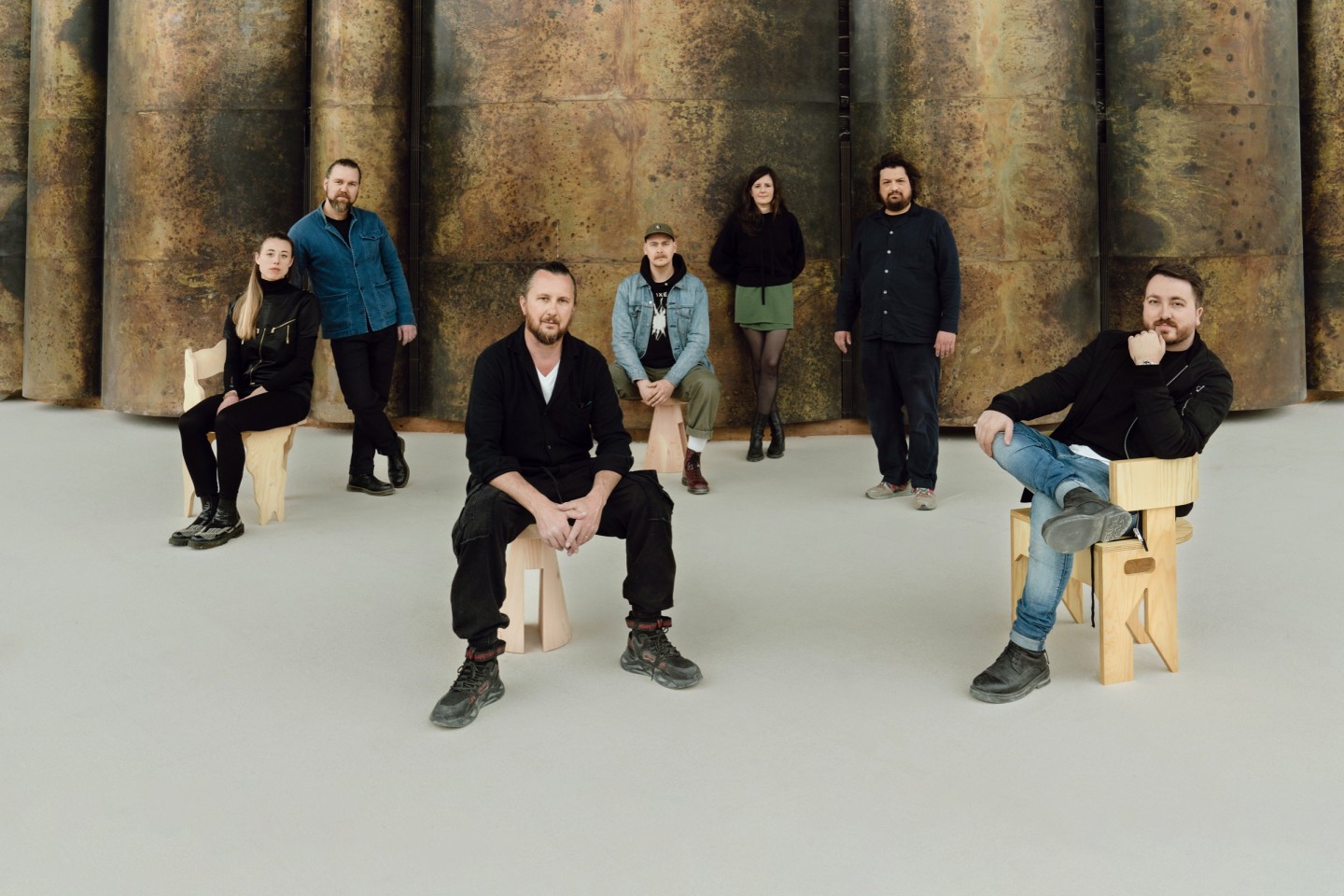
Roula Khalaf, Editor of the FT, selects her favourite stories in this weekly newsletter.
For interior architect and designer Lionel Jadot, designing a hotel is like directing a movie. The 53-year-old Belgian is no stranger to either. In addition to dreaming up schemes for hotels in Lisbon and wineries in France, overhauling penthouses for private clients in London, overseeing a European co-living start-up, and managing Zaventem Ateliers, a huge studio complex housing the design cooperative he founded in 2017, Jadot has also made three short films and a feature. “I think in frames,” he says. He describes himself as “an adventurer”, and is always on the move: in his spare time he’s off on motorcycle holidays exploring the more remote parts of India and Costa Rica.
Today he’s behind the wheel of his jet-black 1966 Mustang, weaving through Brussels’ Friday traffic towards his biggest and most ambitious project yet: Mix. Encompassing a 180-room hotel, three restaurants, a food market, a co-working space, an auditorium and a health club, Mix is housed in a mammoth 1969-era Functionalist building. Formerly known as La Royale Belge, after the insurance company that commissioned it as its headquarters, the 40,000sq m building is testament to a bygone era of plush corporate architecture. Conceived by René Stapels and Pierre Dufau, its Corten-steel structure is arranged in the shape of a cross perched on a transparent base, and overlooks an ornamental pond and a beech forest. Clad in mirrored, caramel-hued glass, it has the luxuriously menacing whiff of a Bond villain’s lair.
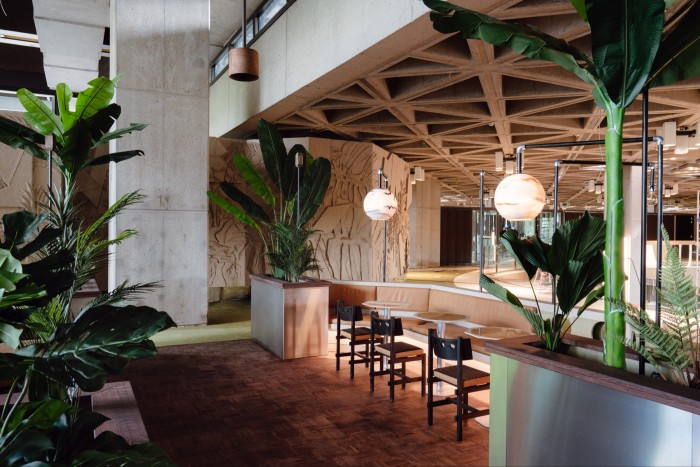
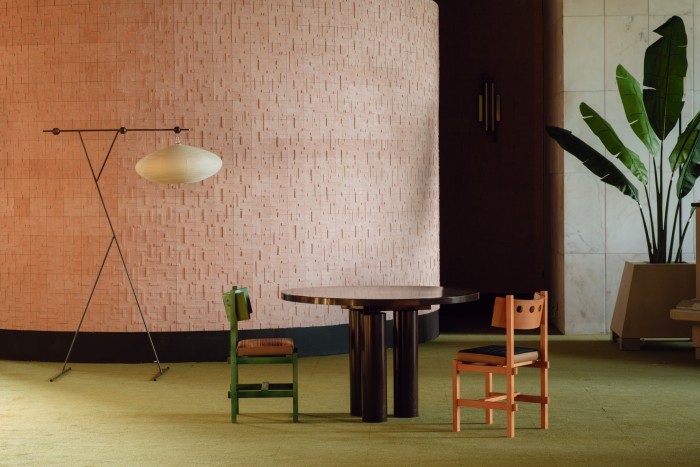
Jadot won the contract to reimagine the interiors two years ago, with a proposal to fill the building with site-specific works by local artists and designers. He was especially keen for Mix to be a showcase for the community of creatives he has created at Zaventem Ateliers – and for Belgian design more widely. “I don’t like it when everything fits together perfectly with matching colours,” says Jadot of the melting pot of styles. “This way, the hotel becomes a huge communication tool: there are thousands of stories about the objects and the people behind them.” With this, he picks up a brass coat hook, and begins an animated monologue about developing the design with Fonderie Woit, a decades-old foundry established in Liège, near the German border.
More than 52 artists from the Zaventem crew and further afield have contributed pieces to the hotel – from door handles to a 4m-high wooden sculpture. Every detail is commissioned like a work of art. Belgian studio Krjst has designed bespoke hangings for the main restaurant and bedroom windows. Sister-and-brother duo Alexandra and Grégoire Jonckers, famed for their large-scale metal, mineral and resin works (and who occupy the biggest studio at Zaventem, with their octogenarian sculptor father Armand), have made a vast reception desk in their signature etched brass. Roxane Lahidji, a French designer who creates furniture made from a natural salt composite harvested from the Rhône delta, has created more than 200 lamps for the bedrooms and 12 for the lobby. And the food market features a monumental 157m cast-concrete block bar created by Zaventem alumnus Bram Vanderbeke, designed to complement the original concrete diagrid ceiling.
“I don’t know many architects or designers who would invite so many others to contribute,” says Vanderbeke, who is now based in Ghent. “I think that’s going to create very strong elements within the space.” He laughs. “To do a crazy project like [Mix] you need to be like Lionel.”
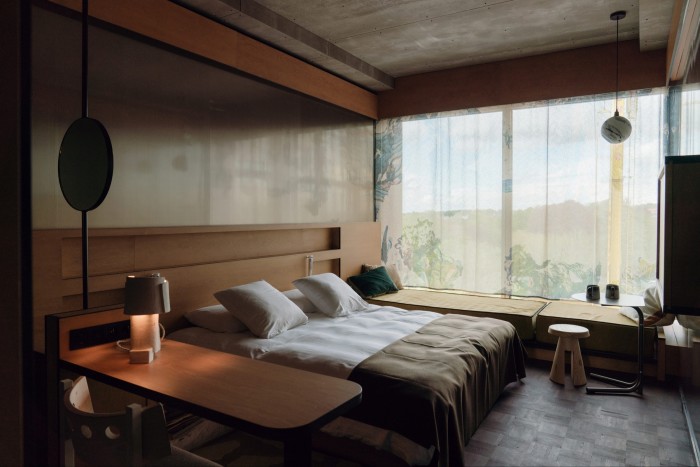
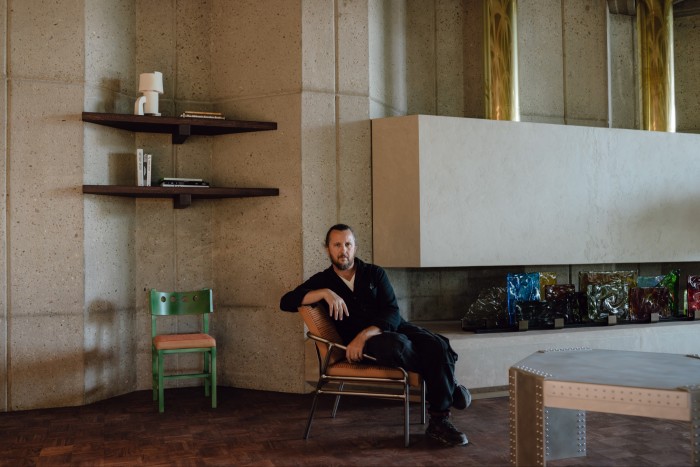
Born into the Brussels-based Vanhamme family of furniture makers, Jadot was tinkering away in the workshop beneath his parents’ apartment from the age of six, feeling his way into becoming a sixth-generation craftsman. When his mother died unexpectedly, leaving his father bereft, Jadot gave up a place at design school in Florence to take over the family business – and oversee a team of 35 artisans – at the age of 19. “I told them, ‘I know some things, I don’t know other things, you’ll need to help me.’ I learnt a lot.” Eleven years later, he decided to go it alone, establishing his own studio in 2001 with a reputation for upcycling. “Today [upcycling is] a concept, but I was always super-aware that there were a lot of things left over – marble, metal, food – that we could use,” he says.
Zaventem Ateliers grew out of Jadot’s understanding of collective creativity and a mission to reboot a medieval craft guild. In 2015, he discovered an abandoned 19th-century paper factory near Brussels Airport, on the outskirts of the city. With funding from several investors, he spent a year converting the three-storey, 6,000sq m brick building into 32 glass-fronted workshops centred around an exhibition hall, and established a board to help him choose tenants. They favoured analogue makers with specialist skill sets who were keen to participate in a modern-day creative network.
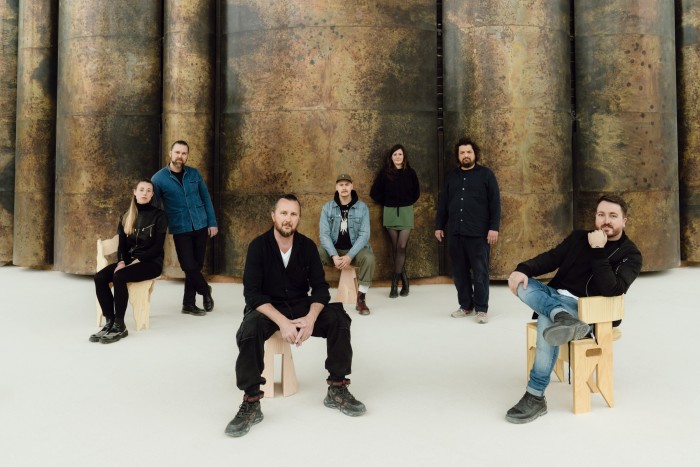
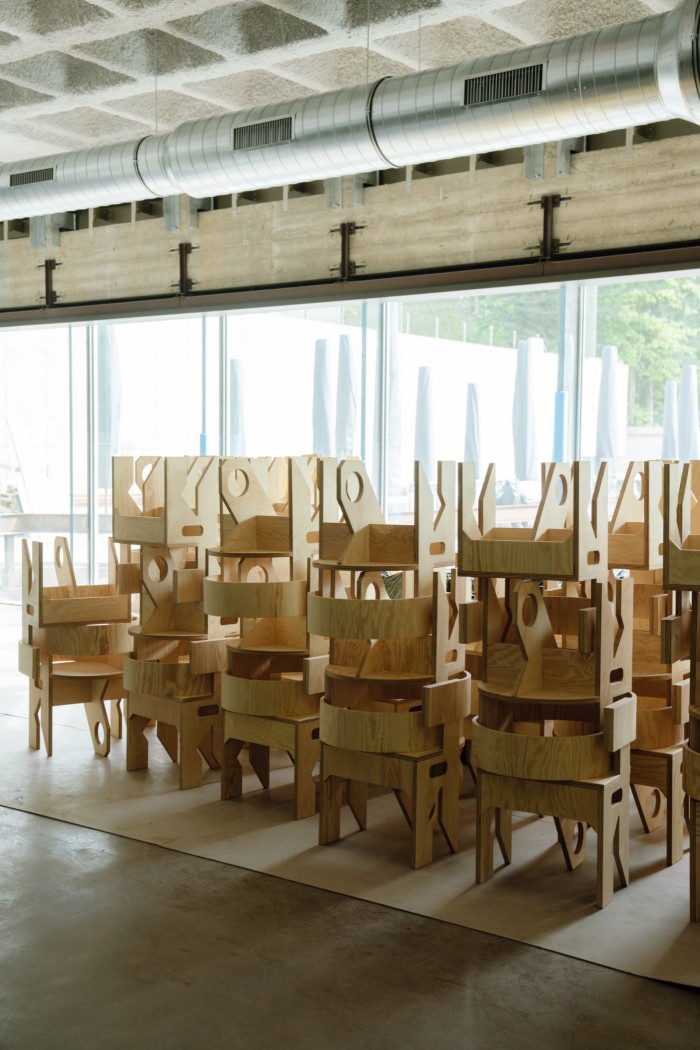
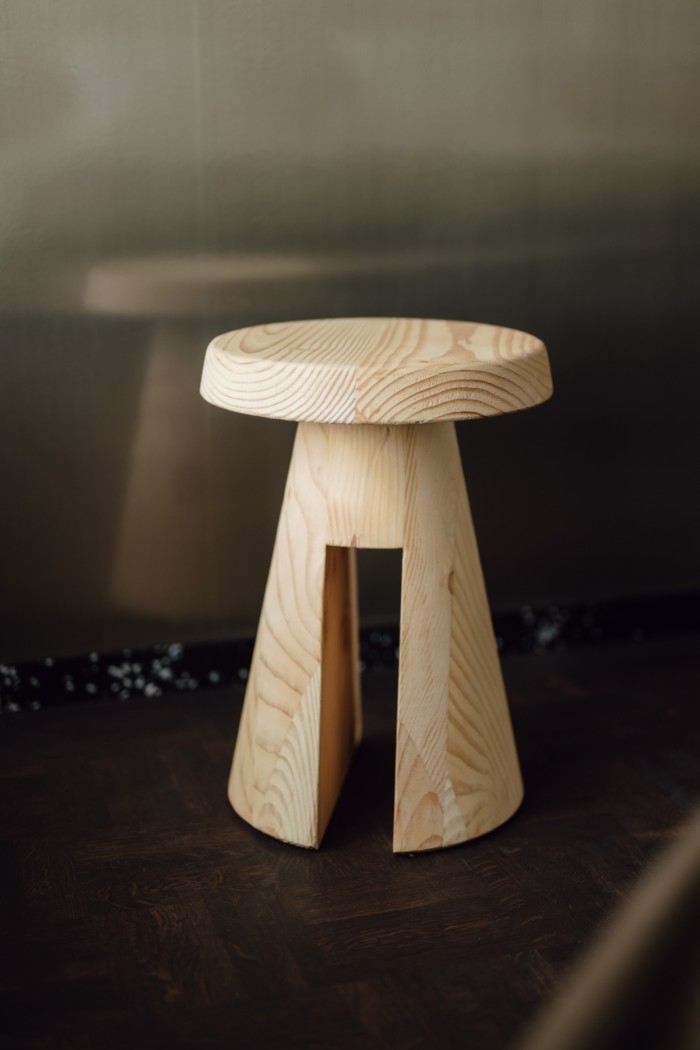
Today, Zaventem Ateliers houses 24 independent makers (weavers, woodworkers, bladesmiths and sculptors among them) as well as Jadot’s own practice, which employs 10 people full-time. Long leases at favourable rates encourage designers to put down roots. There’s an open-source database of both contractors and collectors. Then there’s the socialising, gently fuelled by Belgian beer: in addition to a now-legendary opening party in 2018, numbering 1,500 guests, the artists gather day-to-day in the communal kitchen, on the roof terrace or in front of the open fire. For Belgian designer Arno Declercq, whose blackened-wood furniture has fans in architect Peter Marino and Kim Kardashian, and who created the 4m-high sculpture for Mix’s lobby in iroko wood sourced from Benin, such interaction is a welcome respite from his 12-hour working days. “Otherwise I’d be a monk,” he laughs. Designer Pierre Coddens agrees: “If you want to create objects and projects with soul, you need to have fun. Without fun… the objects will be meaningless.”
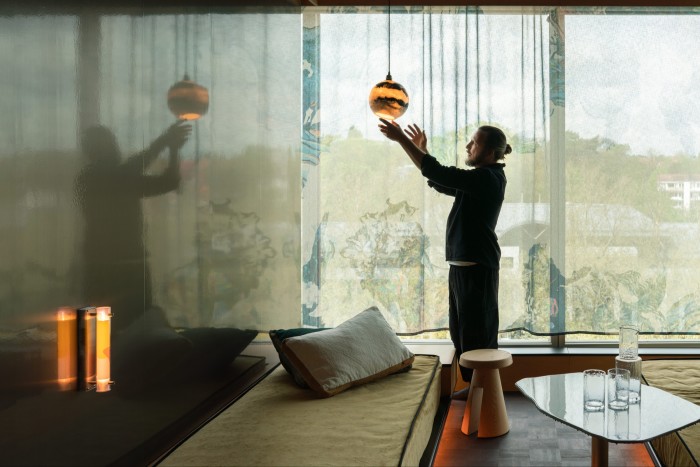
This modern guild and its new creation, Mix, are another facet of the ongoing cultural revival of Brussels: a city once written off as bureaucratic, bourgeois and boring. More than 650 gallery shows were listed on the city’s agenda.brussels platform in 2022. New contemporary art spaces, such as Fondation Blan, are emerging and established players are expanding: last August, Xavier Hufkens celebrated its 35th anniversary by adding a 2,200sq m modern building to its existing gallery in a 19th-century townhouse. Meanwhile, all eyes are on the long-awaited opening of the Kanal-Centre Pompidou Brussels, set to be one of the largest contemporary and modern art museums in the world when it opens in 2025 in the former Citroën showroom on the Brussels-Charleroi Canal.
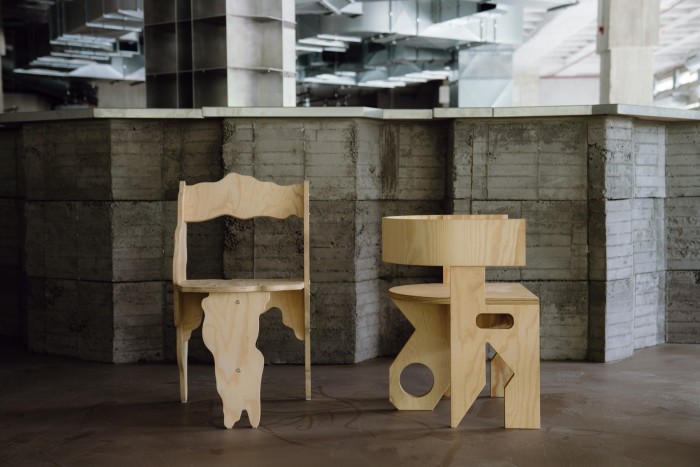
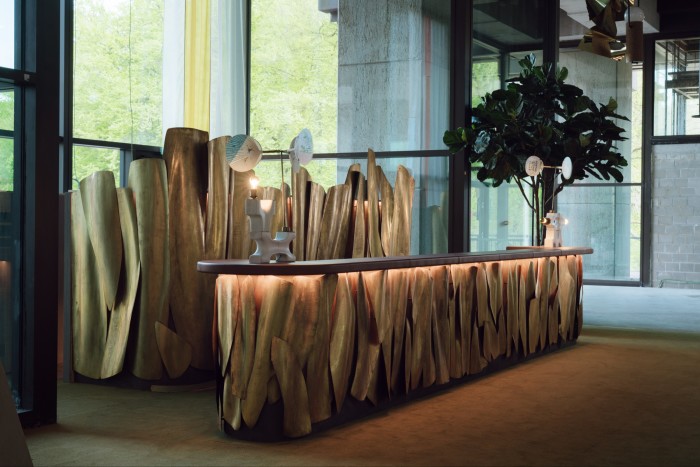
“Over recent years Brussels has become a place where many international artists, representing various generations, live and work. It is an incredibly rich landscape,” says Kasia Redzisz, artistic director of Kanal, formerly of Tate Liverpool. “Brussels is edgy, critical, humorous, surreal. The performance of Marcel Broodthaers entering the Palais des Beaux-Arts with a camel in 1974 is a perfect reflection of this. I don’t think it would [have happened] in Liverpool.” It’s little wonder that a pilot study is being trialled by psychiatrists at Brugmann University Hospital prescribing free museum visits in Brussels to help with burn-out and anxiety.
“I think people in Belgium are open-minded, and they don’t take themselves so seriously. We don’t care, we just want to do,” agrees Jadot. It’s this open-mindedness he seeks to honour with the confluence of creativity in evidence at Mix. “It’s not a collective, it’s more like a family. We are all different – we do a lot of things. But in the end, when we do something together, it creates energy.”
Mix opens on 23 June at 25 Boulevard du Souverain, 1170 Brussels; mix.brussels; lioneljadot.com
Comments